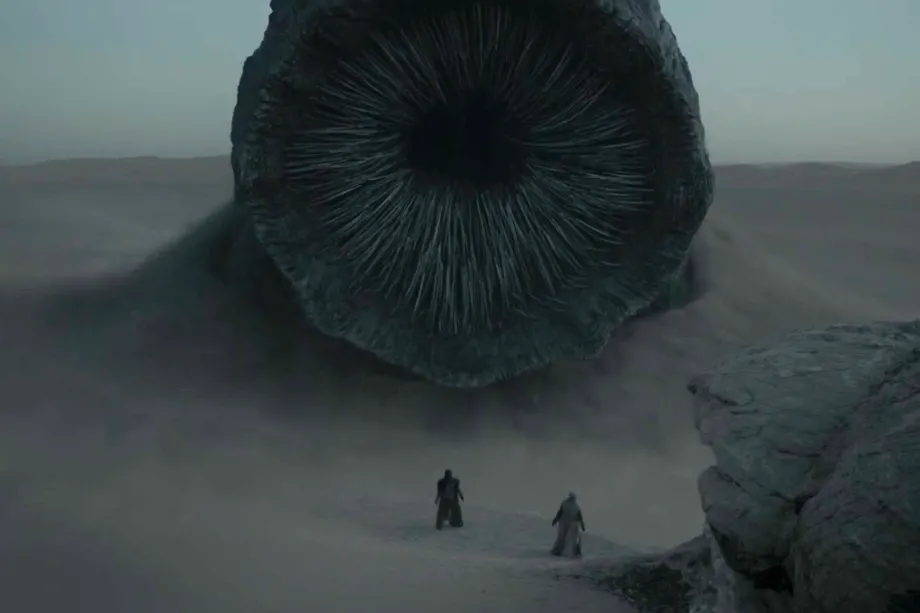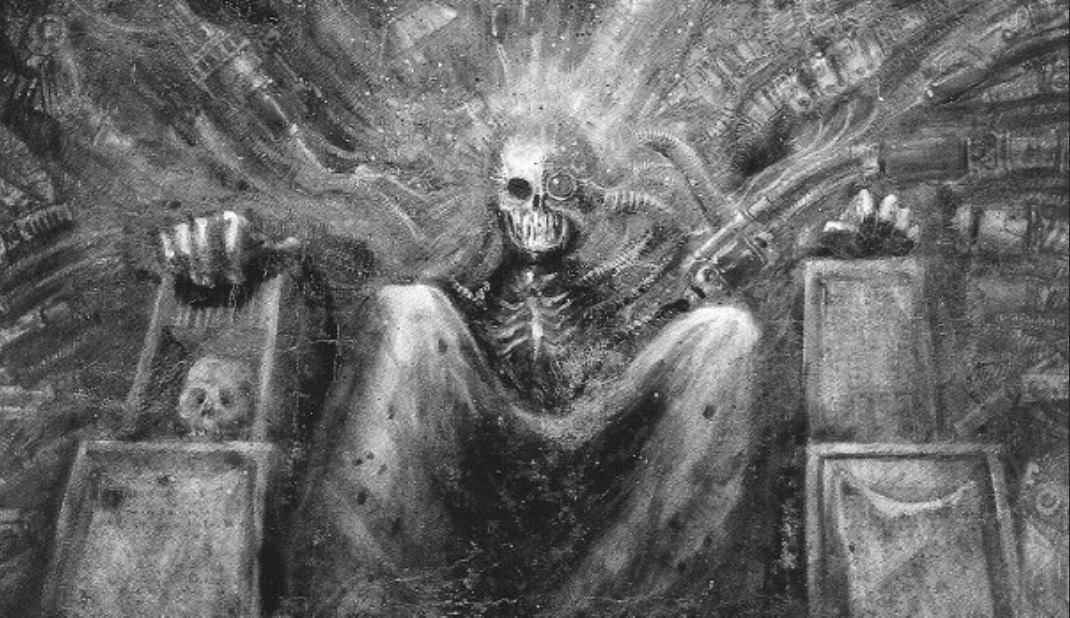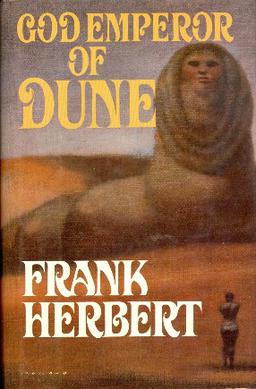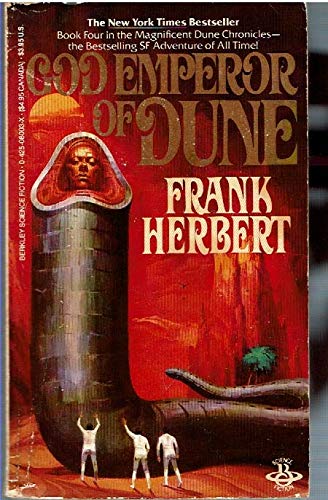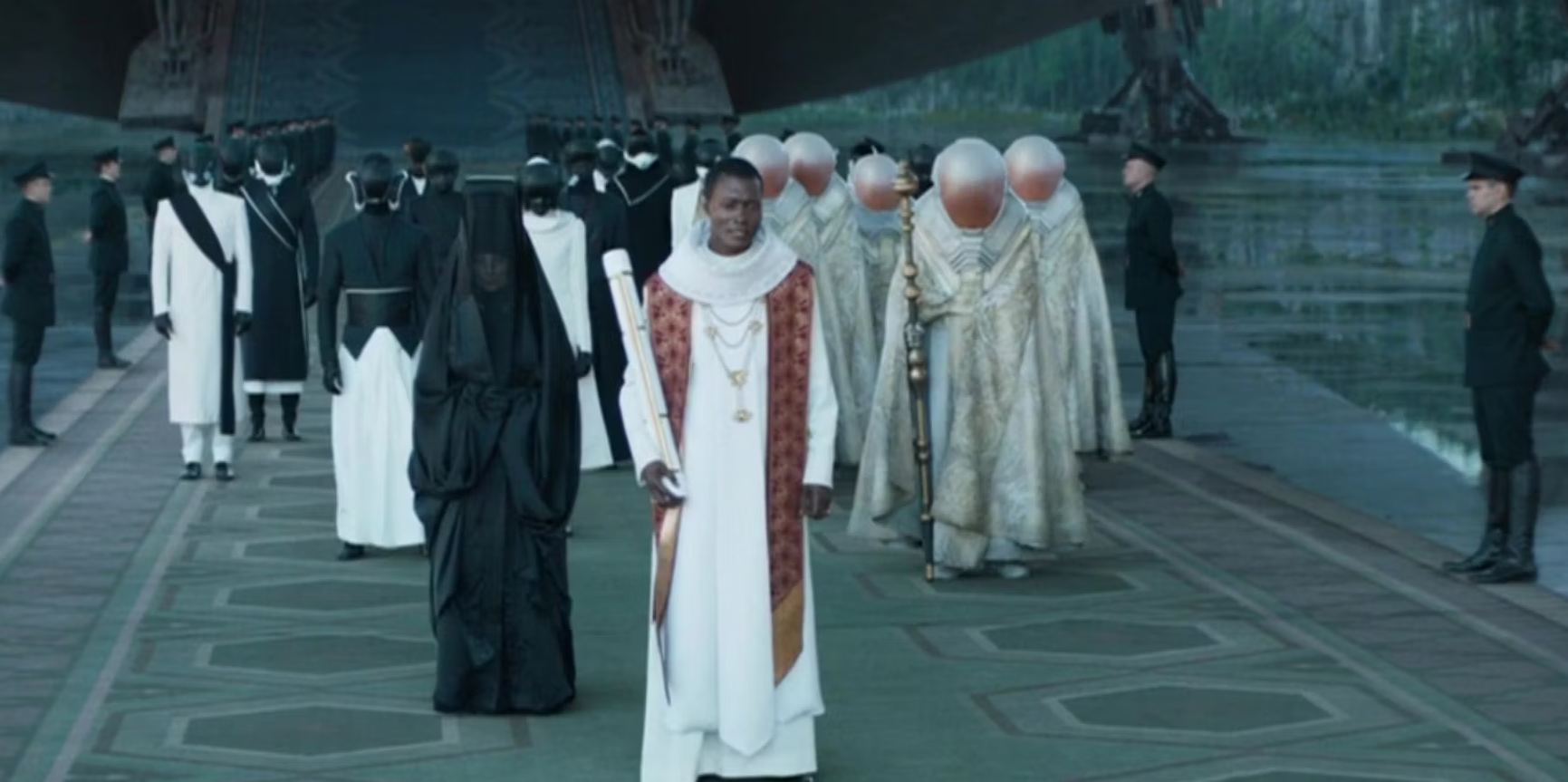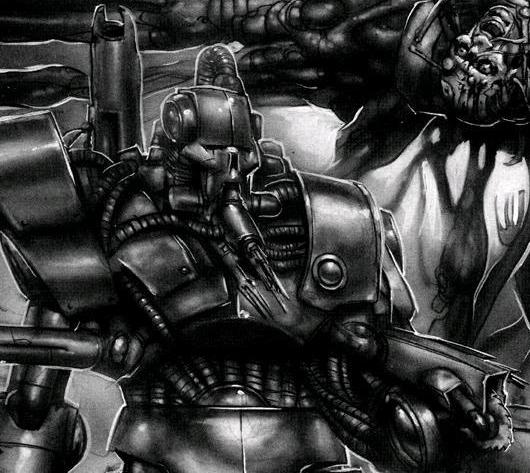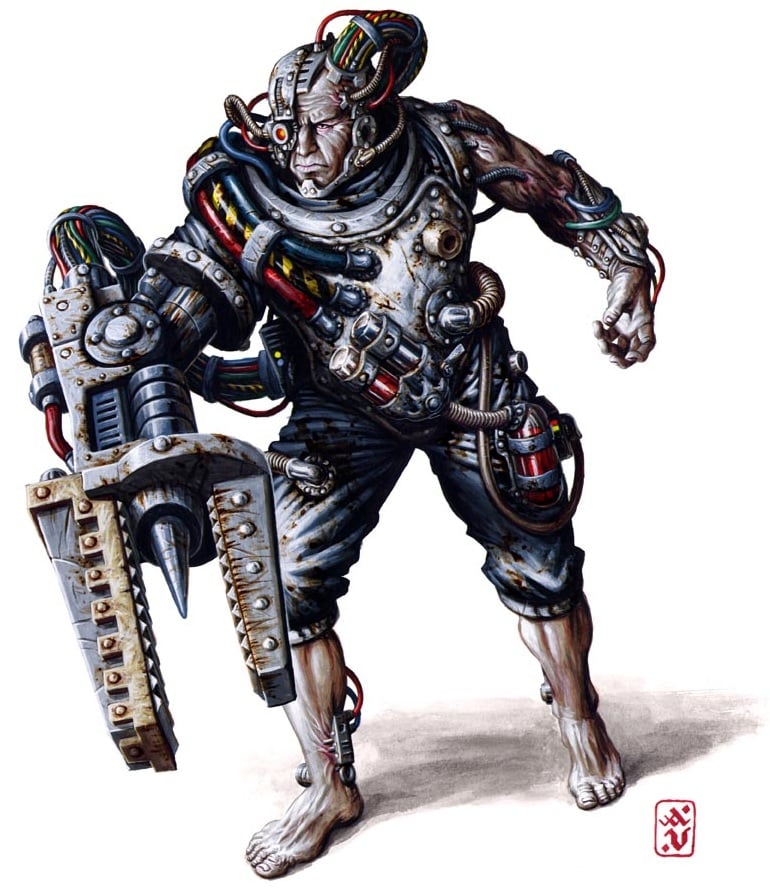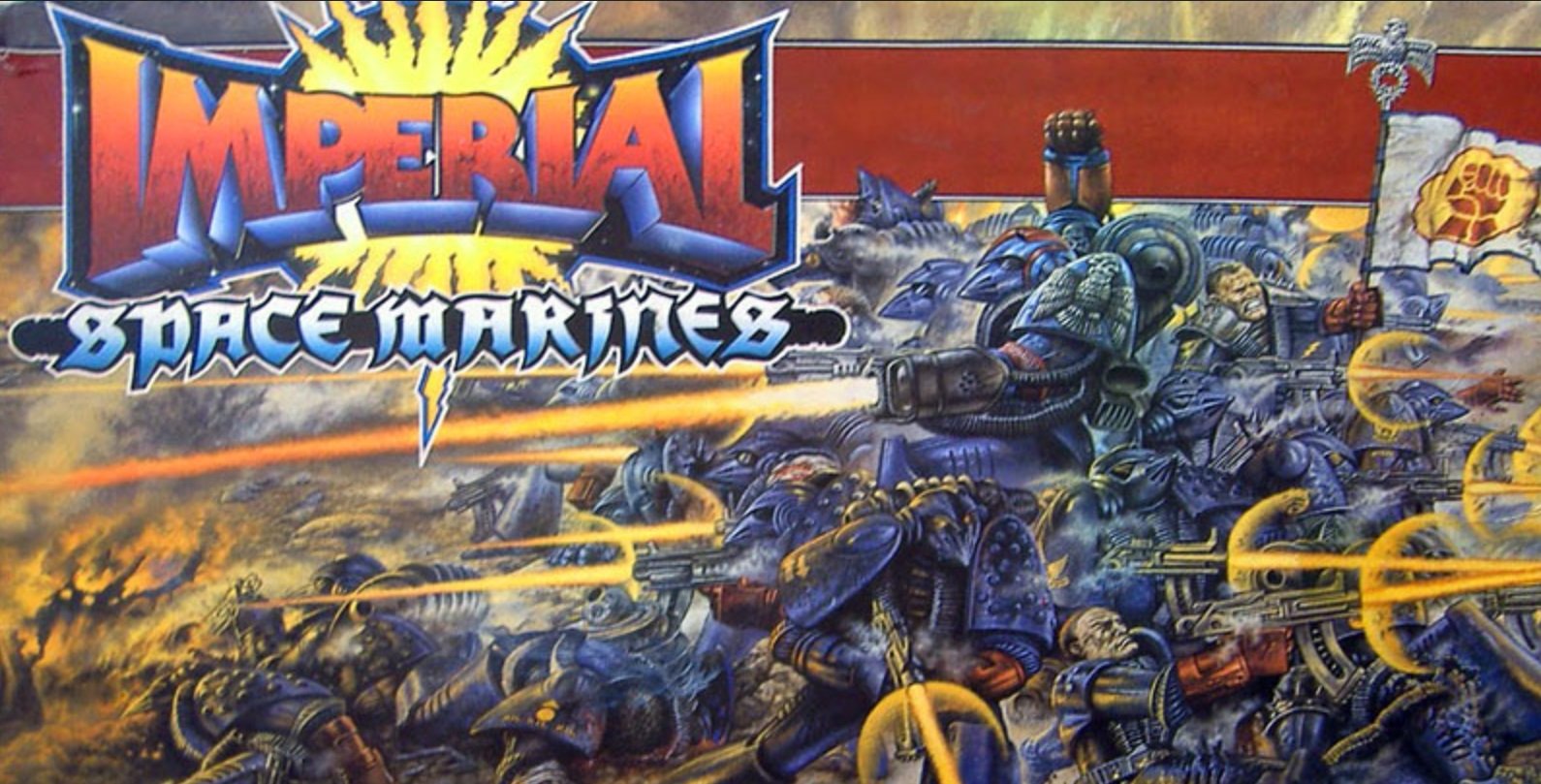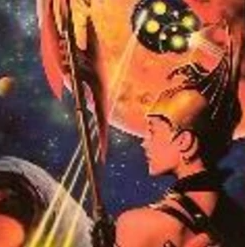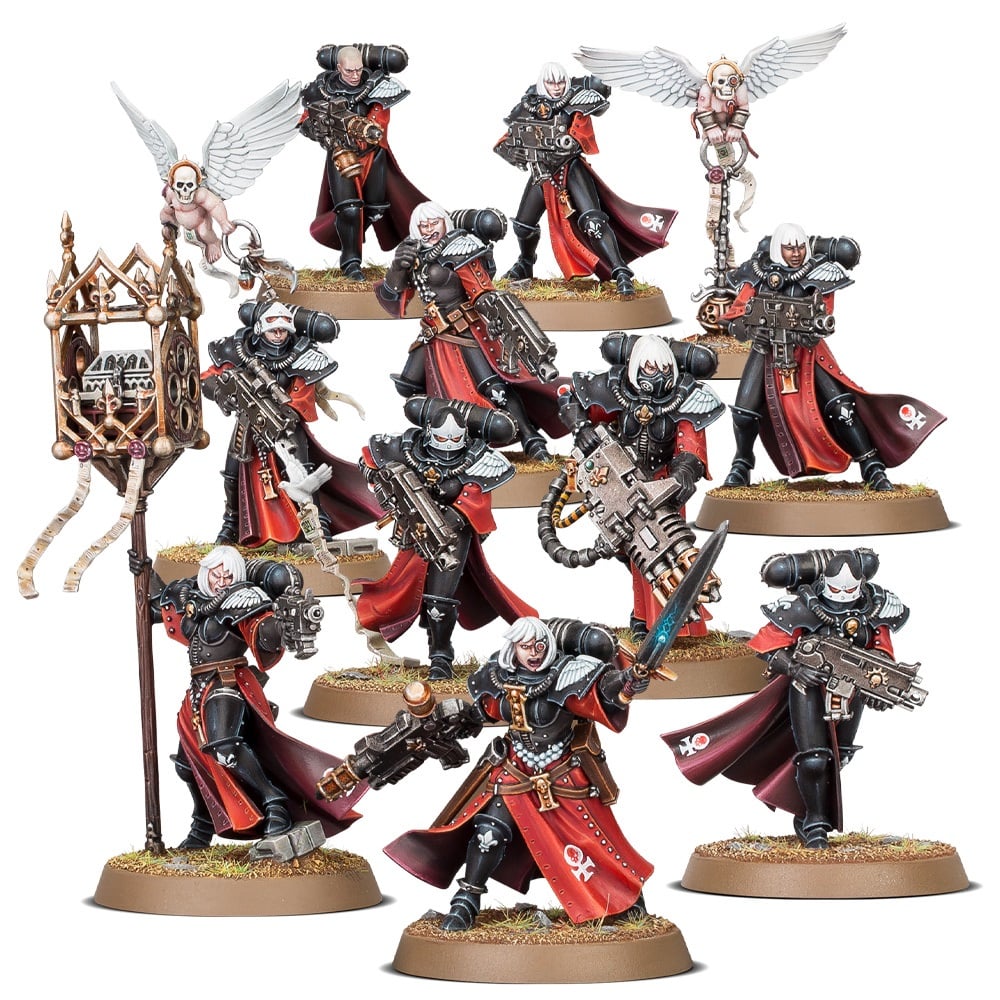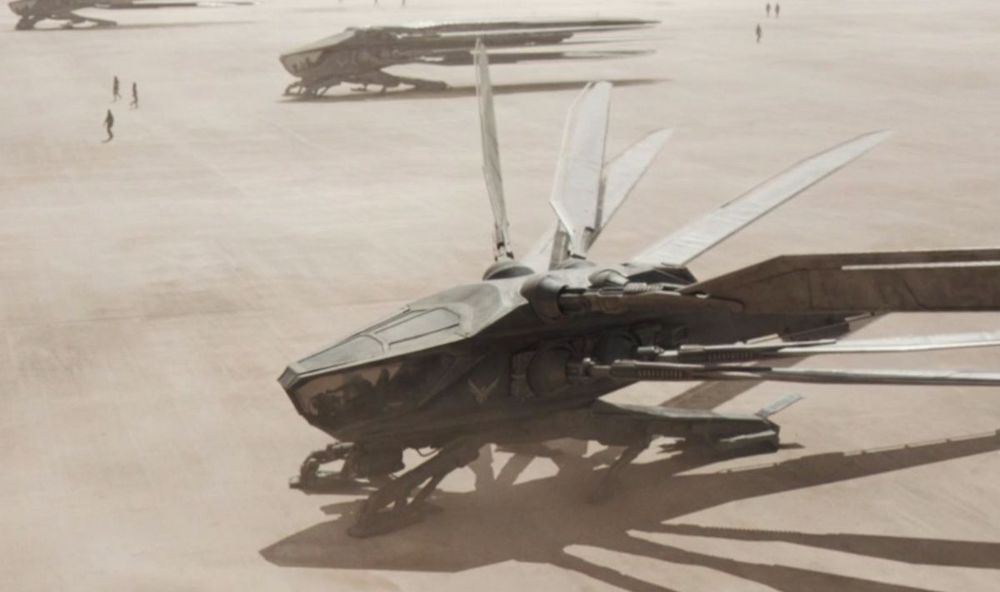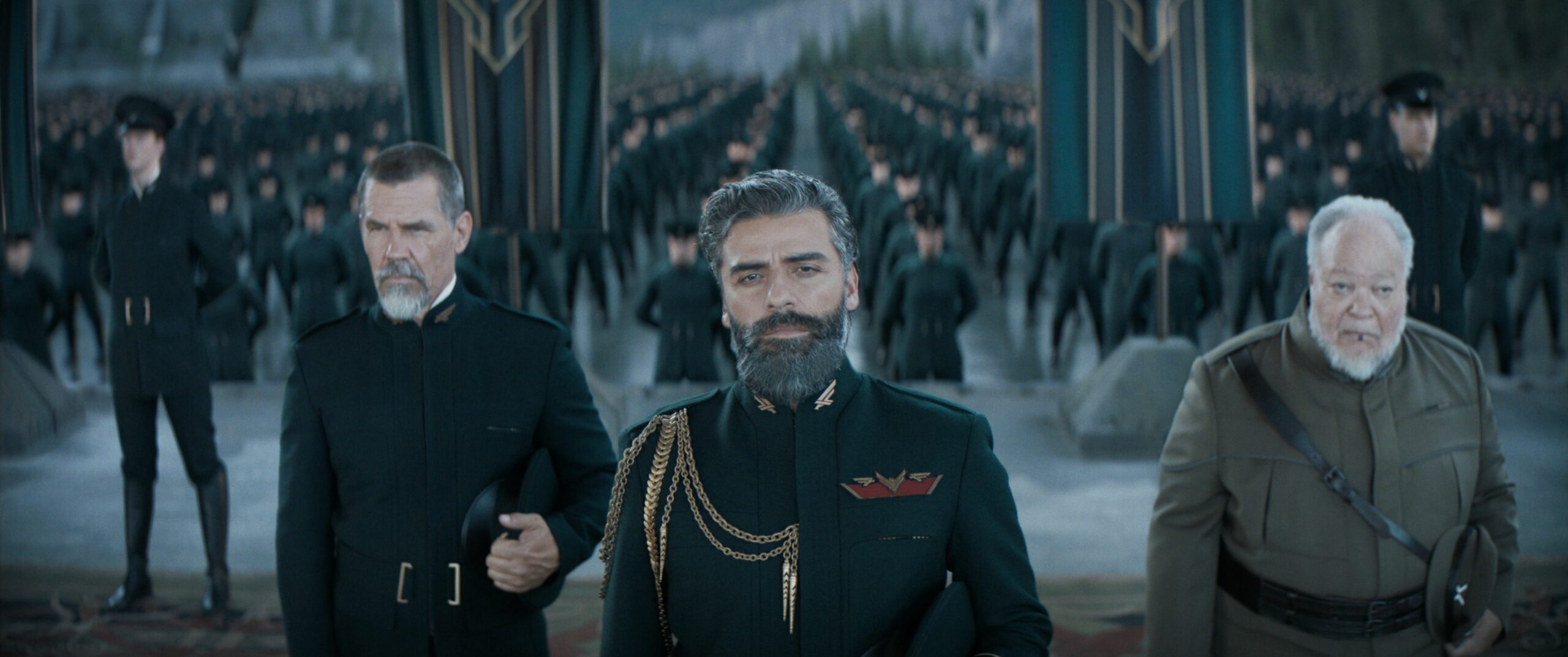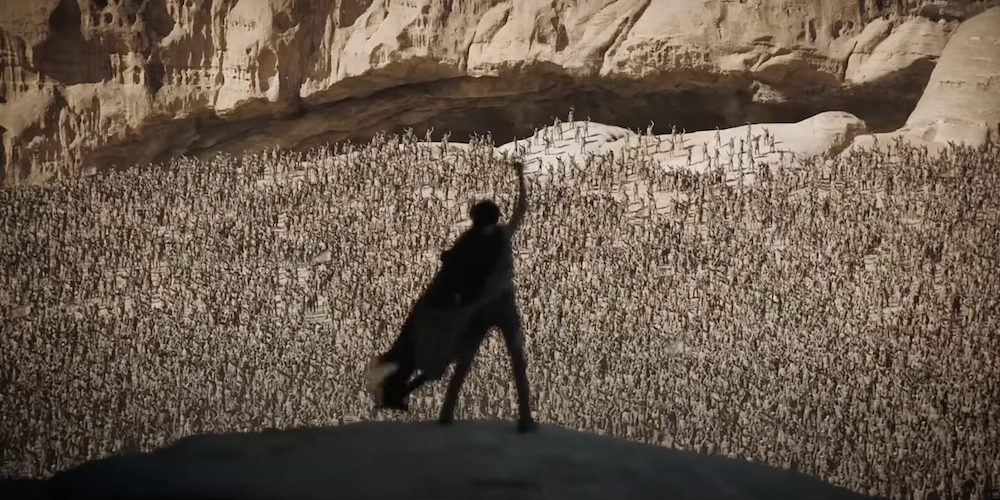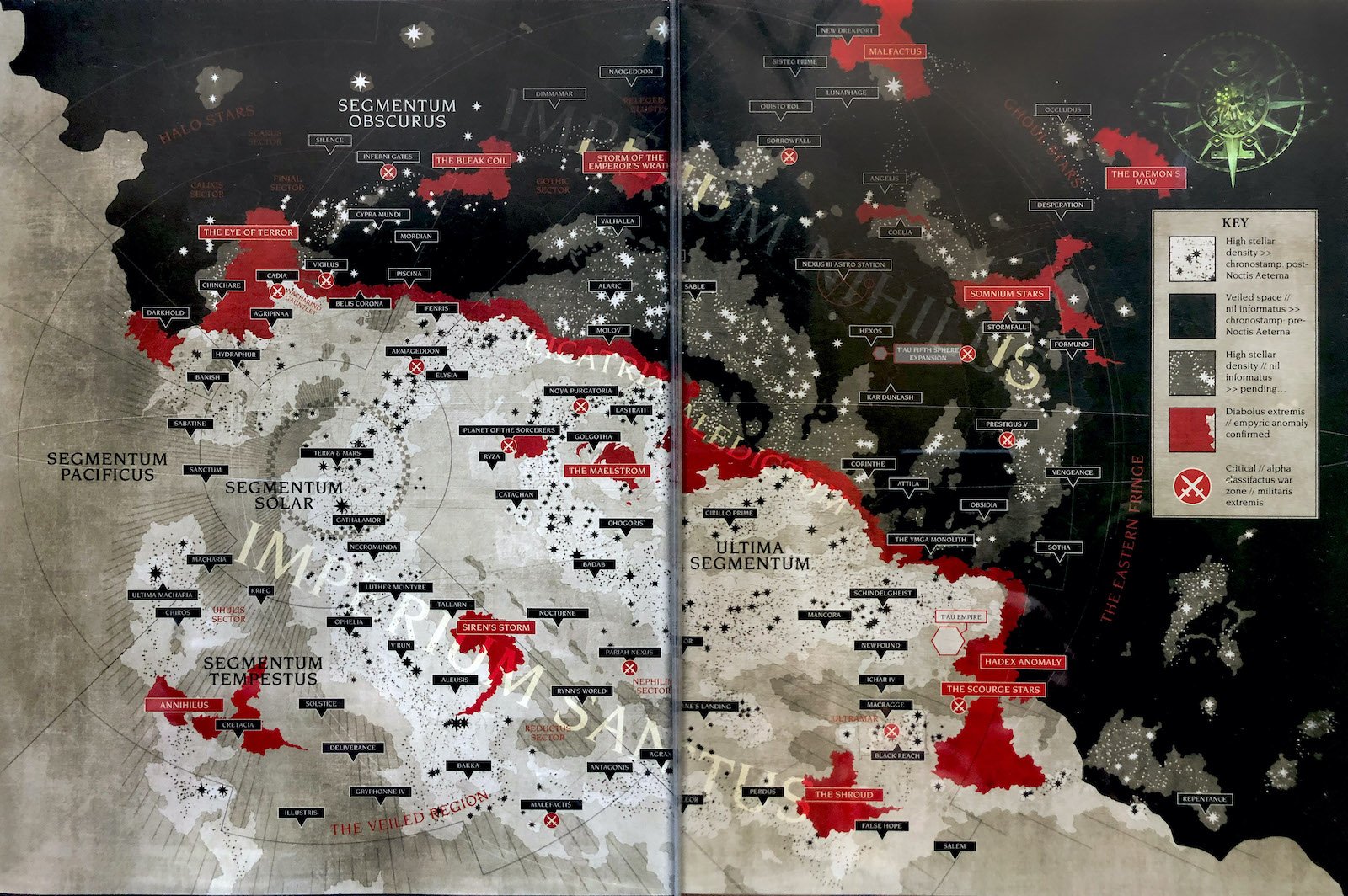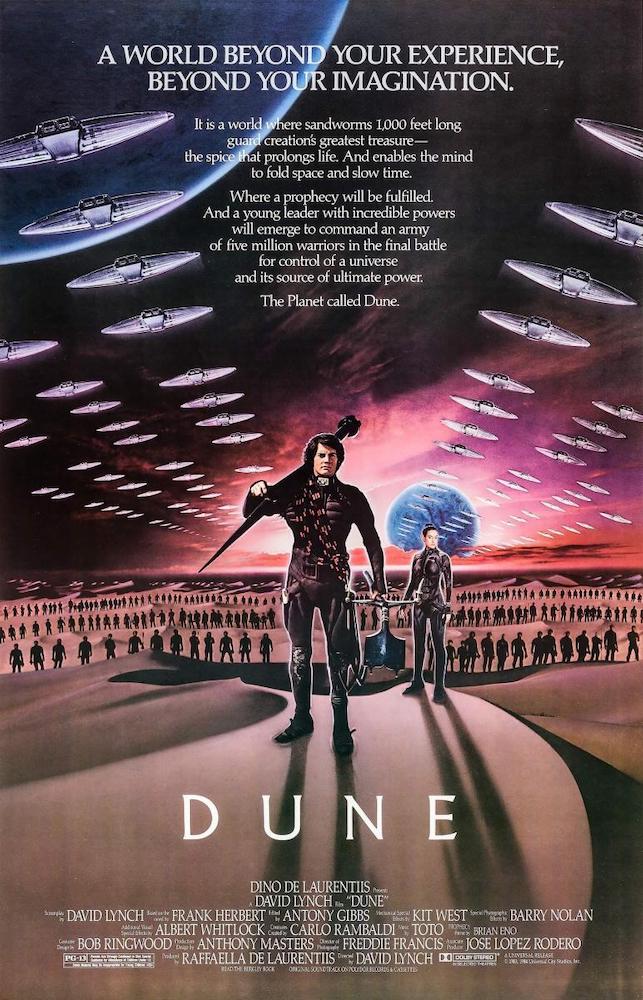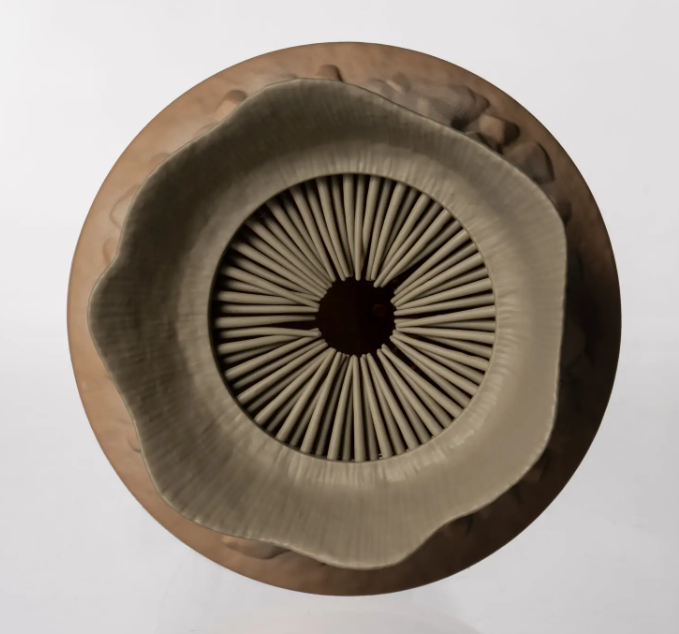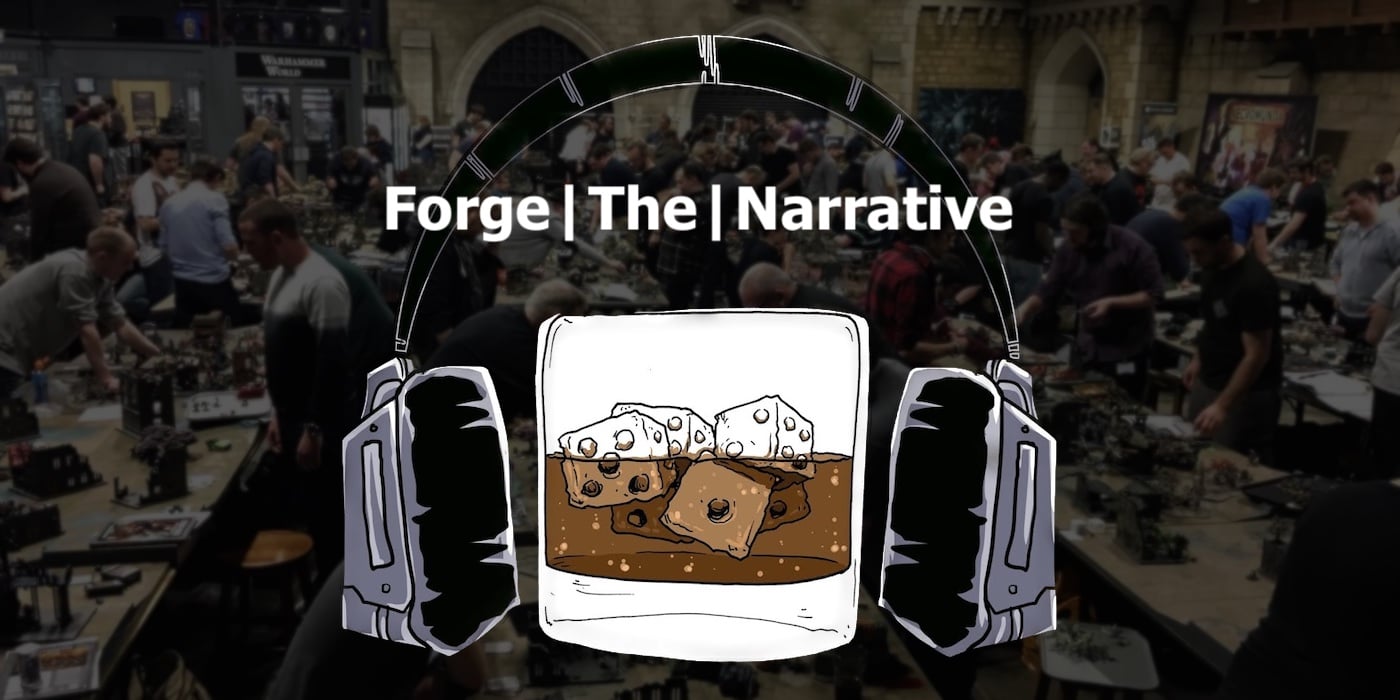Warhammer 40K Might Have Copied A Few Things From ‘Dune’
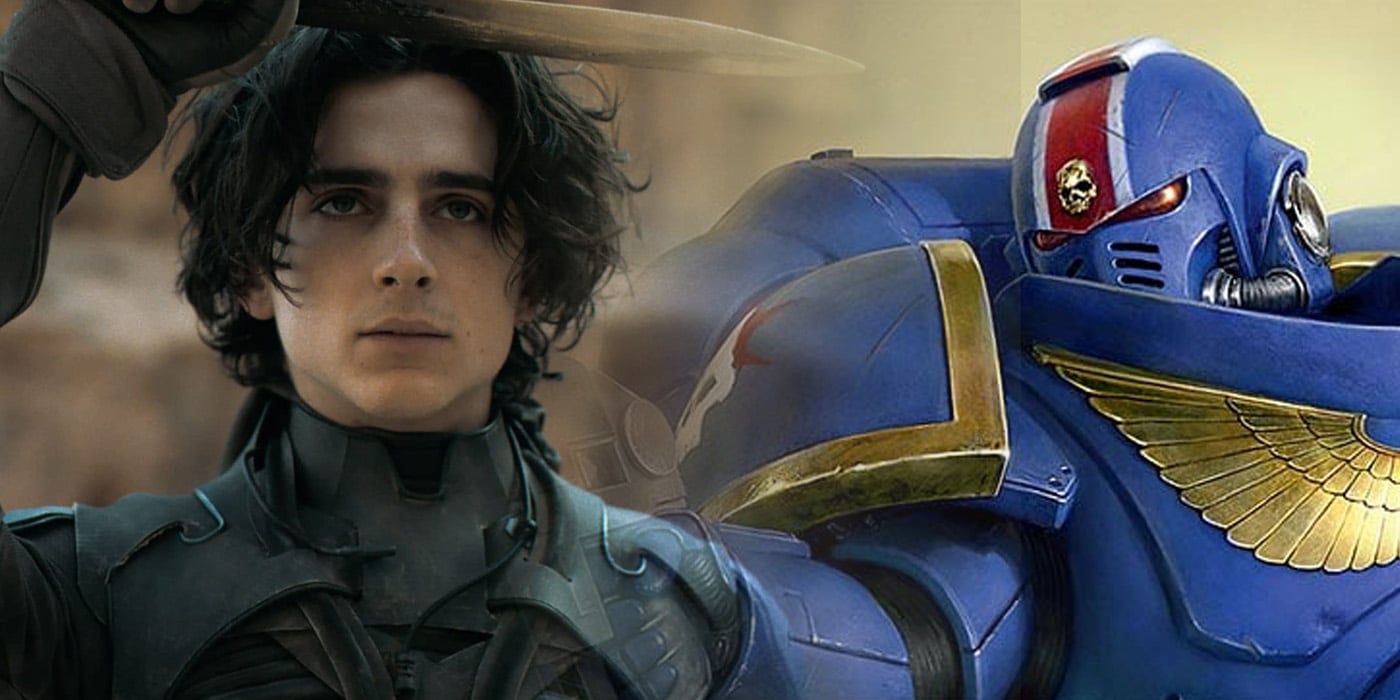

Where did Warhammer 40,000 really come from? Frank Herbert’s Dune had a lot to do with it.
Warhammer 40,000 has an incredibly evocative setting filled with rich and deep lore that’s been created and written over the thirty-seven-year history of the game. For many people, it’s the setting, not the rules or even the miniatures, that draws them in. It’s a rich tapestry of stories and setting woven together to create something incredible. While 40K itself is an original setting and story, not all of the individual elements that make it up are… 100% original. Indeed, Warhammer, as a franchise, owes its existence to the vast number of sources that influenced and informed the creation of the setting, melting together ideas from many sources to form a (mostly) coherent whole.
Dune is often considered one of the most essential books in sci-fi history. It has been an enormous influence on the genre in the decades since its publication. If any single series was a significant influence on Warhammer 40K lore, it was Dune. Dune has so many things that are staples of the Warhammer setting. Today lets take a look at some of the major elements that Warhammer lovingly borrowed from the sci-fi classic.
The God-Emperor
Let’s start with the really obvious one. Both setting have a God-Emperor who rules over mankind. In both cases, this is an extremely long-lived (with effectively no cap to their natural life span) ruler. The God-Emperor in Warhammer 40,000 is a man with exceptional psychic powers and other strange abilities. He rules a vast human Imperium and is worshiped as a god by many, if not most of his followers. Due to the growth of His powers, he is no longer quite human. One could argue He is, in fact, a god. He is not always a benevolent ruler. His main goal seems to be the survival of humankind and He will do dark things to achieve that goal. To many, He is considered a tyrant. Though others may have claimed to rule humanity in the past, He is the only God- Emperor.
And the God Emperor of Dune
In Dune, Leto Atreides II becomes the God-Emperor. Leto is a man with exceptional psychic powers and other strange abilities. He rules a vast human Imperium and is worshiped as a god by many, if not most of his followers. Due to the growth of his powers, he is no longer quite human. One could argue he is, in fact, a god. He is not always a benevolent ruler. His main goal seems to be the survival of humankind, and he will do dark things to achieve that goal. To many, he is considered a tyrant. Though others may in the past have claimed to rule humanity, He is the only God- Emperor.
All that isn’t even a joke. The two characters have numerous incredible similarities. And sure, they also have plenty of differences: one is stuck on a throne, and one is some kind of man/worm hybrid. They are not 100% the same at all. But given God Emperor of Dune came out in 1981, only seven years before 40K, its pretty clear this was a major influence here.
Navigators
Another rather obvious borrowed idea from Dune is Navigators. In both settings, Navigators are humans that allow FTL travel to work. In 40K, they are mutated with a Third-eye and can see the light of the Astronomicon. A navigator can live a long life and grows more mutated over time. Conversely, in Dune, Navigators use the Spice Melange. This allows them to see a little into the future and guide ships in FTL. They are also mutated, though this is more of a full-body thing. Like in 40K, they live long lives and grow more mutated and powerful over time.
To further cement the similarities, both settings organize their navigators as part of a guild or guilds. These guilds are incredibly powerful organizations and have a stranglehold on FTL travel. Interestingly, in both settings, the navigators have at times worked in opposition to the God-Emperor because they worried he would threaten this dominance.
Navigators?
The navigators are maybe the closest one-for-one copy from Dune to 40K. While they derive their powers in different ways, ultimately, this is less of an issue. Both depend on an outside source to work (the spice/the Astronomicon). It’s such an obvious nod to Dune that both the 40K and Dune lore pages I liked to make note of it!
No AIs
Another, less noticeable thing common to both settings is a ban on AI. In Warhammer 40,000 the ban was but in place after an uprising by the Men of Iron. While we don’t know a lot of details about the uprising, it seems that some form or robot/AI rebelled against their human masters. As a result, AIs and other advanced computers were banned and the technology was shunned.
In Dune there was a very similar event, known as the Butlerian Jihad. This too was a galaxy-wide war that pitted humankind against machines and machine intelligences. Like in 40K, humans triumphed, destroyed and banned “thinking machines”. Most AIs and computers were prohibited.
Both settings saw an increase in “human” solutions to replace the last machines. In 40K, you get a lot of augmetics and cybernetics taking the place of AIs. Servitors, Cyber-skulls and even the Adepts of Mars meld machines with a controlling human mind. Dune has its own, not dissimilar options. The most common is the mentally conditioned Mentats, which serve as living computers. Other groups, such as the IXians, Bene Tleilax, and others sought biological replacements for AIs and computers.
Once again, this a clear overlap in ideas here. More than any specific stolen group or leader, this idea might have had the largest effect on 40K. You can trace so much of the aeathetic and feel of 40K to this idea seen so similarly from Dune. This is, in many ways, the core of the Grimdark. The death of the bright future of technology and AIs. The anti-Star Trek, is found here. The betrayal of futurism is key to leading to a darker, backwards and superstitious setting.
The Emperors Elite Army
In Dune, the Sardaukar are the elite troops that serve the Emperor. Rather than serving the Imperium, or the government, they directly serve the Emperor. They are raised from a young age to become elite warriors and many, if not most, candidates do not survive. Growing up in a harsh environment is said to make them better warriors. They are a truly elite force, at points in the story, they are in fact the greatest warriors in the galaxy. They seem to have more advanced weapons and armor than most others, and possibly their own strange religion.
There is less of a one-to-one copy here, but the idea is one 40K clearly took inspiration from. In 40K, the Emperor has a number of what might be considered private elite armies, with the Custodian Guard and the Space Marines being the most well-known. There are a lot of similarities between the Sardaukar and the Space Marines in particular. Space Marines, for instance, are also normally picked from harsh environments, trained from an early age, and many, if not most don’t make it through training. The use of advanced weapon and armor is also similar. I think it’s clear this was more of an influence than fully-lifted idea.
The Fish Speakers
The Fish Speakers were an all-female military organization created in Dune by the God-Emperor. Initially, men were not allowed to be involved with the Fish Speakers at all. They served as an army, and police for the God Emperor. They were highly devoted to him and highly effective. Much of this devotion came from the fact that they were also a religious organization known for their fanatical worship of the God Emperor. Many of them were also priestesses. As time wore on, and it was said the Fish Speakers degraded, they allowed male auxiliaries to join them. In Dune, during the riegn of the God Emperor, they were the most effective military force of all time.
I don’t know about you, but that sounds a LOT like the Sister of Battle to me. An all-female army with male auxiliaries? An army that is often tasked with more police actions? One that is also a religious organization, and full of priestesses? That worships the God- Emperor? I mean, come oe, those are the same right? This is another one that seems a pretty clear copy.
Weapons and Tech
How about some similar tech between the settings? There are some really obvious cross-overs. For instance, the Ornithopters, famously used on the desert planet Dune, are clear inspirations for the Archaeopters used by the Ad-Mech in 40K.
Another pretty obvious one is Lasguns. Let me quote from the Dune wiki: “A lasgun was a continuous-wave laser projector weapon that was perhaps the most widely used hand weapon in the Imperium.” I mean… that’s effectively the same weapon, even the same description, you might get from the 40K lasgun right? While laser guns aren’t a new idea in sci-fi at all, the term “lasgun” is pretty specific. Of course, the two lasguns are different. The ones in Dune are both much more powerful and much more limited due to their reaction with shields. Still, this is a clear copy
A few other Dune weapons that we could mention are:
- Lascannons
- Plasma weapons
- Plasma rifles
- Boltgun
- Needlegun
Just to name a few. All of these have counterparts in the 40K setting. Interestingly, as a couple of these seem to come from later Dune works, after 40K came out, there is the possibility that Dune may have stolen some from 40K!
The Look And Scale
Both Dune and 40K share a lot of aesthetic tastes. Both feature Imperial and lordly courts that, at least in the movies/shows, tend towards ornate 18th/early 19th Century style get ups. You’ve got lots of very fancy uniforms and the like. Counterpoised to this you have a worlds that are set in darkness and incredible utilitarian and even dehumanizing in their look and outfits.
Both also have a great sense of scale. These are big settings, spanning a galaxy. But more than that, things in these settings are big. You have BIG spaceships. Big worms. Large armies, and huge organizations. Everything has a weight and size that gives you a great sense of scale and stakes.
The Whole Damn Imperium
Taking a step back, we can see how in the large scale, the whole idea of the Imperium of Mankind seems heavily borrowed from Dune. In both cases, almost all of humanity is part of an Imperium (Dune uses the same term). The Imperium is ruled (at least at one point) by a God Emperor and is made up of humans. The Imperium shuns a lot of modern technology, and in particular AI. Travel around the Imperium is controlled by a guild whose navigators are highly important.
In both cases, the Imperium is set up as a pseudo-feudal organization. There are powerful houses and nobles, who often fight each other in internal squabbles. Both have many secret organizations that operate for the good of “humanity” but which scare most people (such as the Inquisition or the Bene Gesserit). This is just a light skimming, but it’s pretty hard to look at this and think that 40K’s Imperium wasn’t heavily borrowed from Dune‘s.
And More Besides
These are really just a few of the major things its clear 40K borrowed, or stole, from Dune. There are a lot more varied influences here. We could go into how David Lynch’s Dune has an asthenic that is pretty 40K-ish. Or how the Tallarn Desert Raiders are similar to the Freman. I haven’t talked about how Crusades/Jihads are key factors in both. Honestly, to get the full idea of what 40K took, you’d have to go read the entire Dune series. So I’ll leave you to go do that. In the meantime I’ll just be sitting here waiting for whenever we do get a 40K movie and what our Grimdark version of this will be:
Let us know what your favorite ‘barrowed’ aspect of 40K is, down in the comments!

